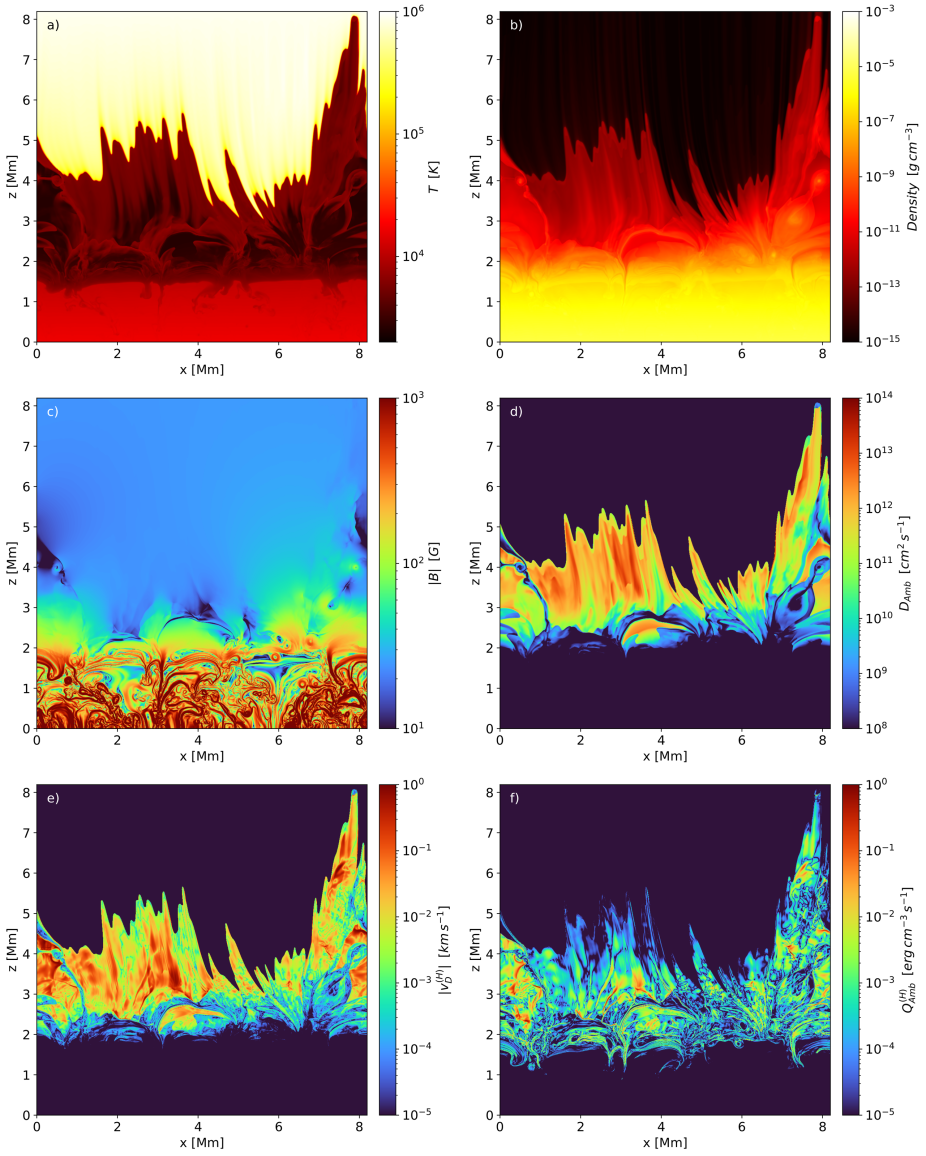Publication: Astrophysical Journal; Authors: M. Rempel and D. Przybylski

Snapshot from a two-dimensional test simulation setup with a 8x8Mm domain reaching from the upper convection zone into the transition region. Presented are a) temperature, b) density, c) magnetic field strength, d) ambipolar diffusivity, e) ambipolar drift velocity, and f) ambipolar heating. The latter two were computed using the hyperbolic treatment introduced in this publication.
Partially ionized plasmas, such as the solar chromosphere, require a generalized Ohm's law including the effects of ambipolar and Hall drift. While both describe transport processes that arise from the multifluid equations and are therefore of hyperbolic nature, they are often incorporated in models as a diffusive, i.e. parabolic process. While the formulation as such is easy to include in standard MHD models, the resulting diffusive time-step constraints do require often a computationally more expensive implicit treatment or super-time-stepping approaches. In this paper we discuss an implementation that retains the hyperbolic nature and allows for an explicit integration with small computational overhead. In the case of ambipolar drift, this formulation arises naturally by simply retaining a time derivative of the drift velocity that is typically omitted. This alone leads to time-step constraints that are comparable to the native MHD time-step constraint for a solar setup including the region from photosphere to lower solar corona. We discuss an accelerated treatment that can further reduce time-step constraints if necessary. In the case of Hall drift we propose a hyperbolic formulation that is numerically similar to that for the ambipolar drift and we show that the combination of both can be applied to simulations of the solar chromosphere at minimal computational expense.